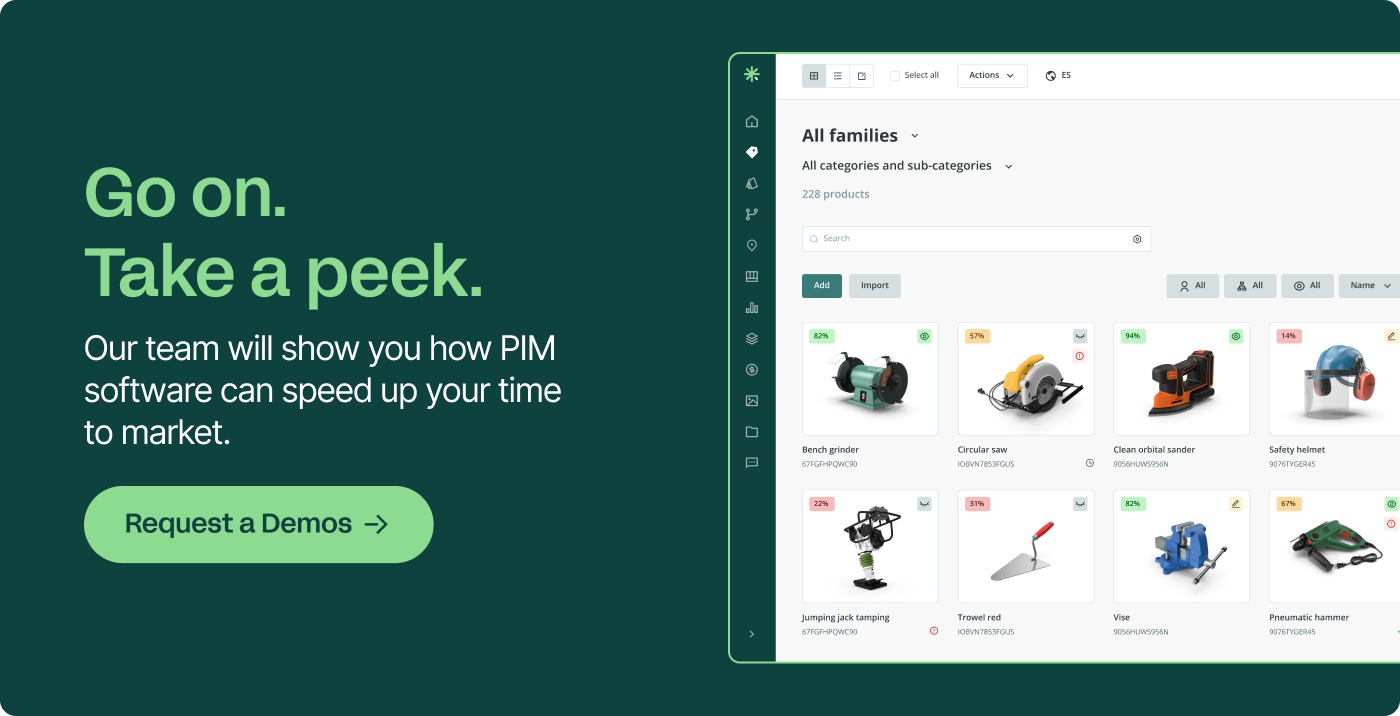
First come the products, then the catalog. And in between? A good CMS catalog that allows you to send error-free products without any difficulties throughout every stage of the process. If your company is dedicated to e-commerce, you will know how important it is to have the right catalog software from the outset. Or from this very moment, if you have begun to notice that your management is not as efficient as it should be.
A Catalog Management software or CMS system for product catalogs allows you to centralize all product management tasks and support you in every part of the omnichannel experience.
The tools of CMS catalog assure you a content of enriched and up-to-date product content, that benefits both your internal team and suppliers as well as your clients. Organize products, create catalogs, filter content, edit information, track shipments and inventories, standardize prices and integrate with payment systems and sales channels.
→ What exactly is Catalog Management? Here you can learn everything about it
All these benefits (and more)... do I hear you ask, where? Here are 5 CMS catalog software tools that you cannot do without:

Seller Cloud is the CMS for product catalogs that supports you in your omnichannel e-commerce strategy: the more channels you add to your network, the more the sales volume will also grow. To help ensure diversifying does not descend into some type of organizational chaos, Seller Cloud allows you to add channels and marketplaces at your own pace, without adding extra fees for each of them (your costs are calculated by the volume of orders you receive).The connection to each channel is complete: you can centrally control inventory, shipments through major courier companies (DHL, UPS...), lists and customer comments.
If you want to send your products to any web or mobile app in a seamless and regular manner, Catalog Bar is a CMS catalog that supports you in the creation of fully customized catalogs, content libraries, price management and content management. This way you can share your updated catalogs quickly and easily, both through online sales platforms and with external collaborators and internal teams involved in your e-commerce process to obtain feedback. If you think that the paper catalog is a thing of the past and that it is more sustainable and efficient to move your business definitively to digital, this a great option.
We can also help you as a CMS catalog! Sales Layer the Product Information Management (PIM) that makes it easy for you to approach the duties of Content Management in a structured and multi-functional way: the first step is to have good product information before creating perfect catalogs. That's why our PIM allows you to organize the content you receive from all your sources, detect errors and enrich the information. Afterwards, we also help you create digital or paper catalogs (with a powerful connection to InDesign), and distribute them in all the channels and apps you want, including Magento, Amazon or Prestashop.

Perhaps before launching your catalogs you need your own website: for this purpose, Wix allows you to create professional websites for both new businesses and more established companies that have their own IT team. You can also design apps and offer integration for e-commerce, price management, inventory and accounting, making it the perfect complement to have a good base from which to share your product catalog and apply your other CMS catalog tools. However, it will be necessary for you to collate it with other CMSs for product catalogs, as it does not include channel management or some sales operations such as returns.
Mobile channels are gaining a lot of momentum in e-commerce sales, so you need good app creation software. Snappii allows you to design your own mobile applications for Apple and Android from 100% customizable templates, along with cross-selling, content management, price management and product comparison functions. You can create apps to manage your catalogs (such as logistics, shipping tracking, transport, warehouse management...), or to deal with your company's internal management tasks. It's an interesting alternative to investing heavily in an app developer, although you'll need a little bit of design expertise.
Have you kept our name in mind? Do you want to try the magic of Catalog Management with a PIM that includes all the tasks for managing and creating catalogs that you can imagine? You can, and free of charge, if you contact us now for an assessment.








.jpg)
-1.webp?width=520&name=formulas-excel-gestion-inventario%20(1)-1.webp)



